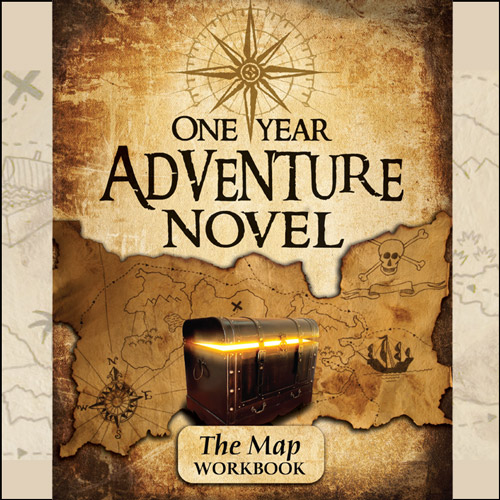Cultural Faux Pas in Fiction
Perhaps, like me, you recently saw Captain America: Civil War in theater. I also watched Batman V Superman: Dawn of Justice (a mistake!). Perhaps, unlike me, you did not practically incinerate your family and friends on the drive home as you vented your fury over the ways in which Africa was represented in these films.
See, in some ways, people like me are the reason writers tend to approach cultural elements in their stories with trepidation. Funnily enough, writers who do get excited at the prospect of creating cultures or incorporating culture in their fiction are usually writers who haven’t had a reader like me happen to them yet.
It’s easy to upset people who have personal experience of different cultures. A reader like me can zero in on one inaccuracy or appropriation and go ballistic, taking the fun out of your writing process (and missing the point).
I am an intercultural person. I grew up between Canada, Benin, and Niger, attending Canadian, French, British, and American schools. I speak five languages passably. I understand how complicated it can be to navigate cultural tensions and misunderstandings. I majored in Writing, but for several years, I also majored in Intercultural Studies.
This probably sounds like a statement of intention for a job application. But I am only telling you this so that you’ll believe me when I say: While it’s easy to upset people, writing about culture without offending or disappointing readers is surprisingly simple.
There are ways to avoid cultural faux pas—missteps—so you can disarm even readers given to the occasional cultural snobbery. The word “disarm” is the key. Your goal is to send subtle signals to your reader that you know you won’t do a perfect job, but you are trying.
Don’t Fake It (to Yourself)
The first and most important step is an invisible one—a step you take in the privacy of your own thoughts. Just admit to yourself how little you know and, yes, how much you wish you could impress your readers.
If you skip this uncomfortable self-awareness check you may “season” your story the way I used to season my casseroles: shaking a bit of every bottle in the cupboard into the sauce in a mad panic. Adding lots of cultural flavor without discrimination, whether for show or out of desperation, will not go well for you. Better to add some salt—i.e., editing—later.
You take this step mainly for your own sanity, but if you do, you’re on your way toward winning the respect of your readers —even cultural snobs who can taste Trying Too Hard.
Talk to People (What?)
Another great thing about facing your ignorance bravely is that you are more likely to embrace humility and ask people for help.
In Captain America: Civil War, how hard would it have been for the writers to ask a Nigerian how to pronounce Lagos, the capital of Nigeria? Instead, they must have consulted the dictionary—a way to get an answer without the embarrassment of human interaction. A Nigerian would have told them LAY-goss not LAH-goss. LAH-goss is the Portuguese pronunciation.
In many ways, the movie presented Nigeria and the fictional Wakanda in a good, if not fantastic light (clean Lagos streets, anyone? T’Challa anyone??), but just that one newscaster pronouncing Lagos as LAH-goss took me right out of the moment. And it was so avoidable!
Don’t Hide Your Head in the Sand
There’s a scene in Batman V Superman which takes place in Africa, in a setting clearly inspired by Timbuktu, in Mali, West Africa. The caption reads “Nairomi, Africa.” Sound familiar? That’s because it sounds an awful lot like “Nairobi,” one of the most recognizable African city names, and the capital of Kenya, a country in East Africa which bears very little resemblance to Mali.
The writers of Batman V Superman thrust their hands into a grab bag of “African” sounds. “This will sound about right,” they must have thought. And they were right, because in no time at all the Internet buzzed with movie reviews referencing scenes in Nairobi.
It was demoralizing to see the damage this decision caused: All the viewers now had something more problematic than ignorance: they had misinformation.
What’s my point? Panicking leads to poor decisions. It’s okay not to know very much about cultures. Just do a little research, and try.
Place Truth Tokens
You’re not going to get everything right. But you can get some precise and unexpected details right. Sure I was disgusted by the pronunciation of Lagos, but my feelings toward Civil War are actually quite warm. Why? Because the writers placed some tokens in the Nigeria scenes—tokens of truth about Nigeria. The product placement, for instance, is for Maggi and Milo—products very common in Nigerian households.
Nigerians have complained that it would have been even better if the products were from Nigerian (vs. Western) companies. But even these critics grant that the writers were trying. We may have rolled our eyes because the fictional Wakandans speak Xhosa, a language spoken in South Africa, thousands of miles from the supposed location of Wakanda, but we were won over all the same—at least it was a real African language. And we smiled over the the ludicrous idea of Black Widow and Scarlet Witch drinking coffee in the afternoon in a West African climate, but the smile was indulgent, not a sneer. Because they tried.
Avoid the Culture Cop-Out
Using culture as your primary method of differentiating characters is a cop-out. Culture is never a simplifying factor; it’s always a source of tension and meaning.
The good news is: tension is good for your novel. So use cultural conflict to say something meaningful instead of using it to avoid the hard work of making your characters truly distinct and compelling as people.
Don’t make one character vaguely European and another vaguely Asian, or one character black and another white, and consider your character development done. Skin color definitely impacts people, but reducing culture to different skin colors is shallow and worthless. Many people with the same skin color have very different cultures, and the reverse is also true.
Add Characters
There is safety in multiples. I realize that you may have been warned against using a huge cast. Beginning writers are well known for too many characters, most of whom only exist to carry armor or sport a cool name. So the warning is merited. But if you are writing a story involving more than one culture, you need more than one character to represent each culture.
This is especially critical for the culture of your villain. If your villain comes from a different culture than your hero, you absolutely need to have other characters who will share the villain’s culture but not his values. And if the cultures don’t share skin color, make that a double must. If you think this is silly, no problem, but don’t act surprised if a reader complains about a lack of nuance.
Signal Your Awareness of Stereotypes
After making sure that each culture is represented by more than one character, add a nod to stereotypes. I know, that sounds as though it would be the opposite of a good idea. Why even give stereotypes the time of day?
Chimamanda Ngozi Adichie, a famous Nigerian fiction writer, said, in a TED Talk, that,
…the problem with stereotypes is not that they are untrue, but that they are incomplete. They make one story become the only story.
Stereotypes, for good or ill, exist. So the smart thing to do with them is signal to your reader that you are aware of them.
There are different ways to give a stereotype a nod. You can make a choice so conclusively opposite to the stereotype that readers will think, “I see what she did there!” For instance, in Civil War, it did not escape me that there wasn’t a single reference to corruption in the scenes in Nigeria. Corruption in Nigeria is infamous; Nigerians are the brunt of many jokes. Completely avoiding this spoke loudly.
Another way to nod to a stereotype is to use half of it and do something inventive or unexpected with the other half. The fight scenes in Lagos were split between a busy, colorful open market (expected) and a pristine lab in the Center of Infectious Diseases (unexpected).
You can also try switching stereotypical roles. It would have been a lovely touch in Batman V Superman if the people pulling the strings in the terrorist camp in Nairomi turned out to have been Africans, not Russians or Americans. Instead, it was the usual story of a black African front with manipulation by powerful white people behind the scenes.
Or, just address the elephant in the room directly. Get your characters to think and talk about their impressions and reactions to each other. Throw in some humor to lighten the mood.
Choose a Cultural Catalyst
What, one more character? Yes. If you truly want your story to tease out cultural differences and tensions, you need what is called a cultural catalyst. A catalyst is a substance that makes something happen between two other substances that would not otherwise interact. A cultural catalyst is a character who makes two different sides interact. She might be a mediator, but she might just be someone with split sympathies who relates to the characters of both her own and another culture. Or someone with parents from different cultures.
Cultural catalysts are very useful for un-packaging customs and ideas, and for translating a character’s language or gesture to readers as well as other characters.
A cultural catalyst makes far-fetched connections believable. Every person who successfully navigates a new culture succeeds thanks to a cultural catalyst showing up on their front porch to offer friendship, a service, something. People need a starting point to explore the unfamiliar territory of their differences. Usually, that starting point is a person. A catalyst. Make sure your story has at least one.
Dig Beneath the Glam
People who have experienced many cultures talk big about the wonders of travel and the rich experiences of their lives. But. Underneath is a lot of suffering in the form of confusion over identity and loyalty, and in the form of loss. People who straddle cultures and cross cultures are conflicted.
You will make friends with your most intercultural reader when you place a hand to their cheek and say, through the narration of your story, that you know how much longing and loss and tension they themselves feel about their cultural experiences.
Interacting with more than one culture at any kind of depth is bittersweet. Surreptitiously hand your difficult reader a tissue. He might act snobbish because he’s in pain.
And allow your characters to feel both transported by the magic of a new perspective, and sad when they inevitably have to let go of some elements from one culture or another. There wasn’t time in Civil War or in Batman V Superman for the characters to process their cross-cultural experiences, whether in fictional Nairomi and Wakanda, or real-life Lagos, Berlin, Vienna, and Bucharest. But you do have room in a novel. Give culture some room.
…
Have you ever tried to write about a real-world culture other than your own? How did you approach the topic?
…
 About Tineke
About Tineke
Tineke Bryson (Honors in Writing, Houghton College) lives in the very center of a pretty complicated Venn diagram, right where fiction and nonfiction, creating and editing, and North American, European, and West African culture meet. Tineke grew up abroad, and before joining The One Year Adventure Novel, she worked as an editor.
She and her husband, Matthias, live in Lawrence, Kansas. She loves British and African history, reading middle-grade fiction and YA fantasy, and collecting moths.




The question that presents itself to me is that of fantasy.
What do we do when we want to create our own culture, but are too bound by our own experience to create a new culture that’s not just a copy of something in the real world?
Copying a real world culture accurately is difficult enough. What happens too often in fantasy and sci-fi is copying from *stereotypes* of real cultures, or skipping over the issue entirely–groups of people distinguished by hair color fighting over their polar-opposite idealogies. Taking authentic bits and pieces from real cultures is a better alternative.
Personally, it helps me to remember that cultures are made of individuals. How do you create a new character that isn’t just a copy of someone in the real world?